Posted by: Ken @ 12:32 pm
On our walks, Mary Lou and I often try to find “target” birds. All winter, a male Painted Bunting is a “must see” for her. This time of year I am especially looking for Savannah and Grasshopper Sparrows. Neither of us got our wish when, around sunrise one morning this past week we set out to our local wetlands.
We actually did not have very high expectations. The air was still, which helps us see small movements of foliage that can betray the presence of a small bird. However, a light fog impaired visibility, and the birds were either absent or unusually quiet. One thing you learn about the wild world is that beauty surrounds you under any conditions– but you sometimes have to look very hard.
Pearly beads of dew festooned this spider web:
We walked on to the edge of the Harbour Lakes impoundment, about a quarter of a mile north of our usual birding patch. The sky turned bright blue and the fog was beginning to clear. Mary Lou spotted movement along the shore, then exclaimed that a snake had entered the water. It took me a while to even see the creature, and by then it was swimming away from us.
Characteristically, this Cottonmouth Moccasin swims with its bulky head held high above the surface of the water:
Two male Boat-tailed Grackles crossed swords in a territorial confrontation:
On an adjacent rock, two sleeping Greater Yellowlegs woke up as I approached:
A Tricolored Heron was doing an erratic “dance” as it darted after a school of small fish:
This Little Blue Heron was struggling to subdue a large and very active siren:
Sirens are considered to be the most primitive living salamanders, and their ecology and natural history is poorly known. Completely aquatic, they lack rear limbs, and keep external gills throughout life.
From an Internet search I learned:
These giant salamanders are often confused with eels. In fact, you may hear people call these salamanders “mud-eels” or “ditch-eels.” However, eels are a type of fish with obvious fins running along their back and underside. Salamanders are amphibians. Amphibians have limbs and no fins. Also, giant salamanders are easily distinguished from aquatic snakes because their skin is smooth, slimy, and lacks scales.
Finding nothing more of note, we headed back to the wooded area to see if birding might have improved, now that sunlight was waking up the insects. To our surprise, there were flocks of warbler, mostly Yellow-rumped and Palm Warblers. Prairie Warblers, notably scarce since the cold snap in December and early January, were back in good numbers.
The Palm Warbler has long legs, an adaptation to its habit of spending much time on the ground:
This Prairie Warbler ’s bill shows the results of foraging on some berries that were covered with fine white powdery mildew:
I must have taken over 20 photos of the Prairie Warblers– Pleased that they had returned, I could not get enough of them:
Another Prairie Warbler struck an unusual pose as it eyed me quizzically:
We saw two Orange-crowned Warblers. This one was also a contortionist:
This Orange-crowned Warbler looked like it might be a Tennessee Warbler at first, as I could not see any yellow under its tail. When I reviewed the photos I was able to confirm that it had yellow under-tail coverts, as well as an eye-ring that is broken horizontally by a faint dark stripe.
An Orange-crowned caught a juicy spider– I hope it was not the one that spun that beautiful pearl-studded web!
This photo of a Blue-gray Gnatcatcher turned out to be rather contrasty against the bright sky, but I loved the way the out-of focus grass in the background caught the sun:
A Ruby-throated Hummingbird thrust out its tongue just as I clicked the shutter:
There are some sure signs that spring will soon be here. A Yellow-rumped Warbler perches on a Red Maple bursting with little red “helicopters”:
Perhaps stimulated by the lengthening days, a male Northern Flicker appeared to be courting a female and was drumming on someone’s roof drain, until it flew up to the broken-off top of a Royal Palm:
The exotic Egyptian Goose is a member of the shelduck family (thus more closely related to Muscovy Ducks rather than true geese) that is is native to Africa. Regarded by Florida Fish & Wildlife as “escapees,” they have been documented breeding in various parts of the state. They tend to nest in secluded areas, and are very aggressive in nest defense and in competing for food. They were first seen in Broward County in the 1960s.
This is one of a pair of Egyptian Geese that I have seen twice before, flying together over the wetlands next to our home, but this is my first photo documentation:
A stop at our local Bald Eagle nest found both chicks to be healthy and growing fast. The oldest was 26 days old when I captured this short clip of the nest-mates:













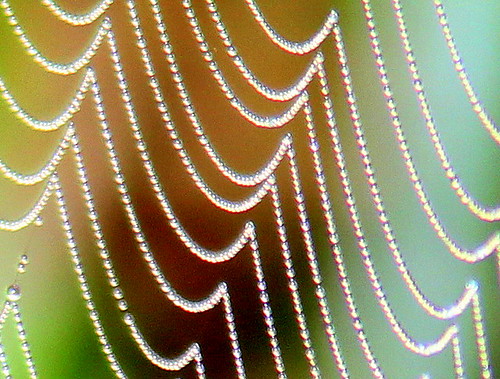
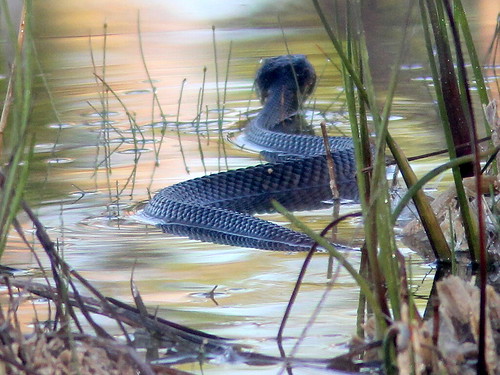
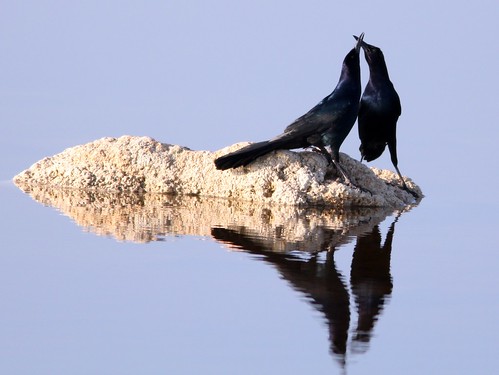
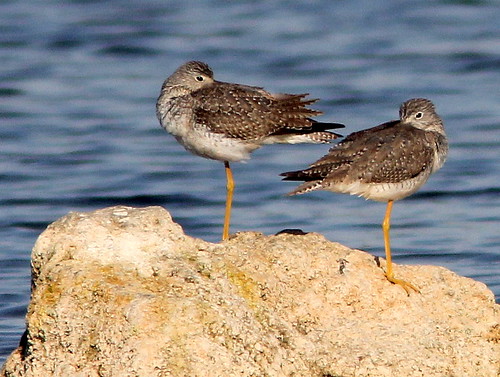
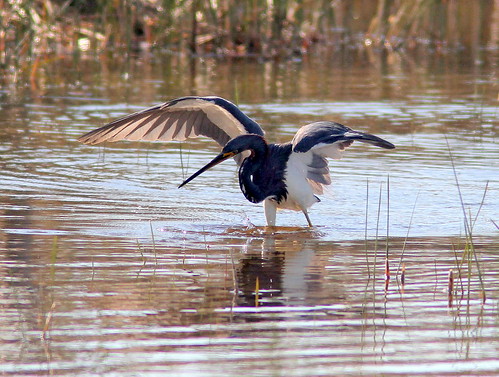
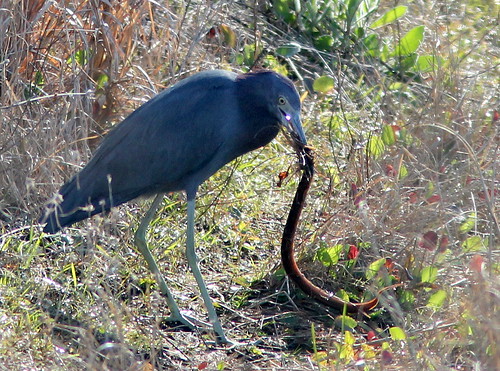
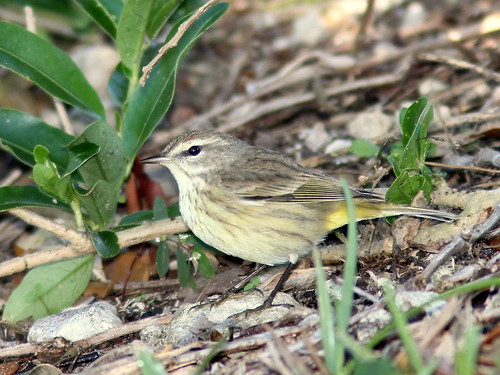
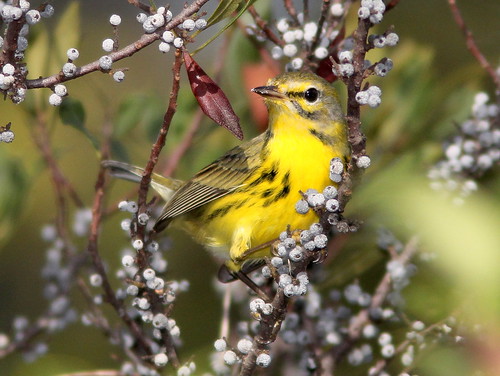
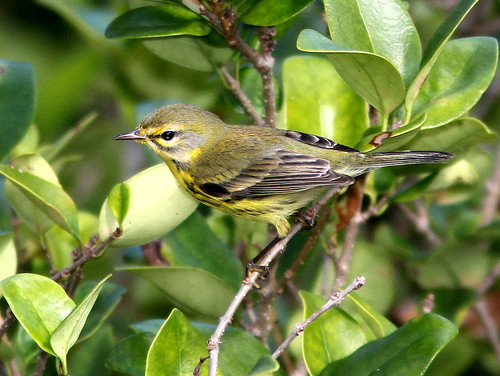

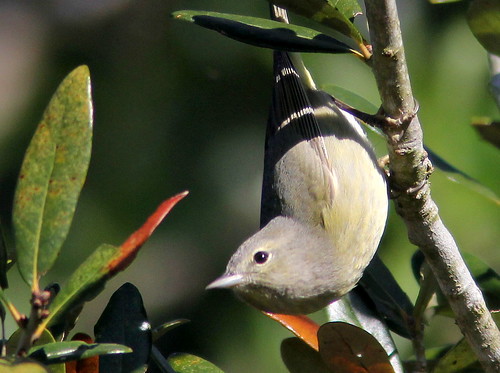
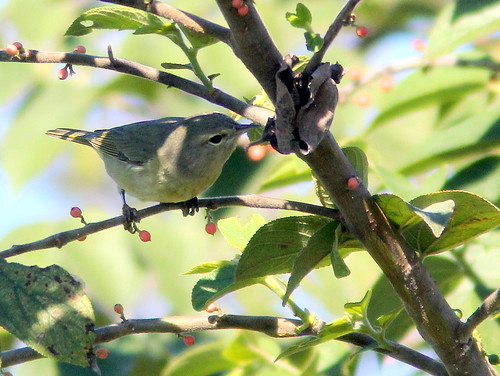
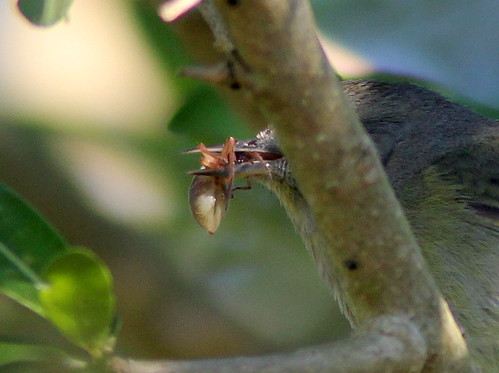

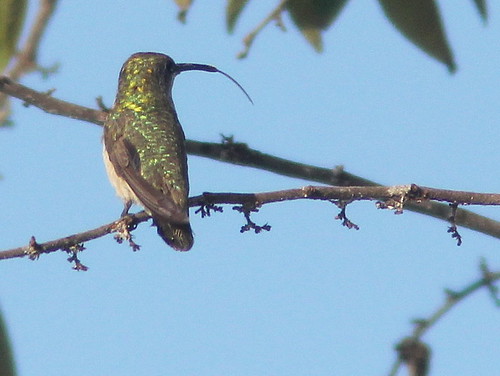
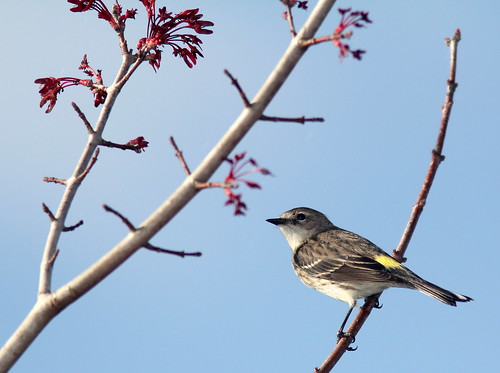
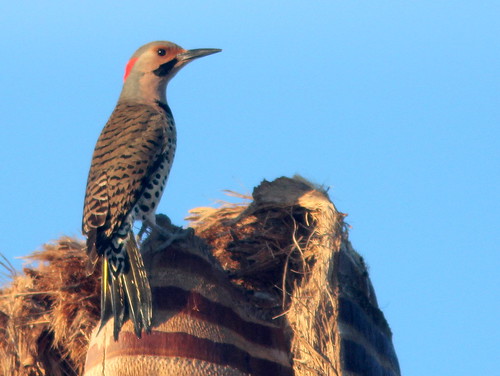

February 6th, 2011 at 1:32 pm Love these pictures! What a treat on another snowing morning in Lincolnshire. Two more inches to add to the 22 we received from the Blizzard of 2011! Jean
February 25th, 2012 at 2:28 pm I am a big fan of nature and love watching such videos and pictures. I am glad that I have found your post because it certainly has lots of great stuff for every nature lover like me. The picture that I like the most are of Cottonmouth Moccasin, Northern Flicker and all the Prairie Warbler ones.